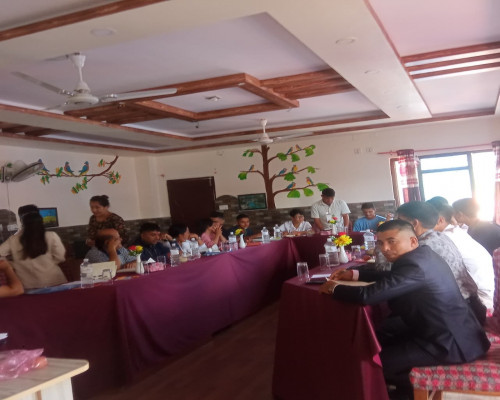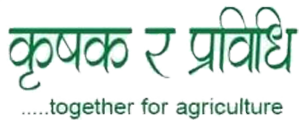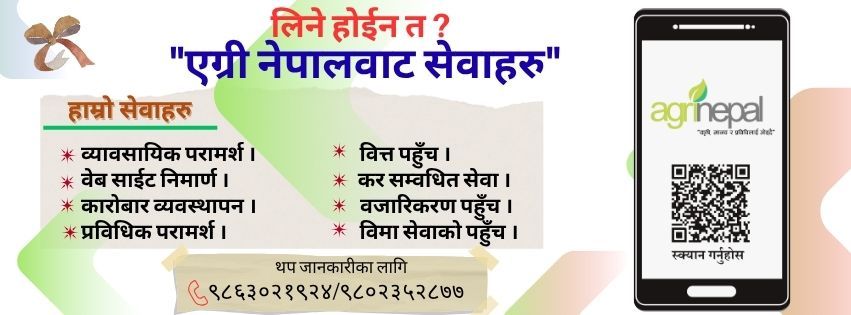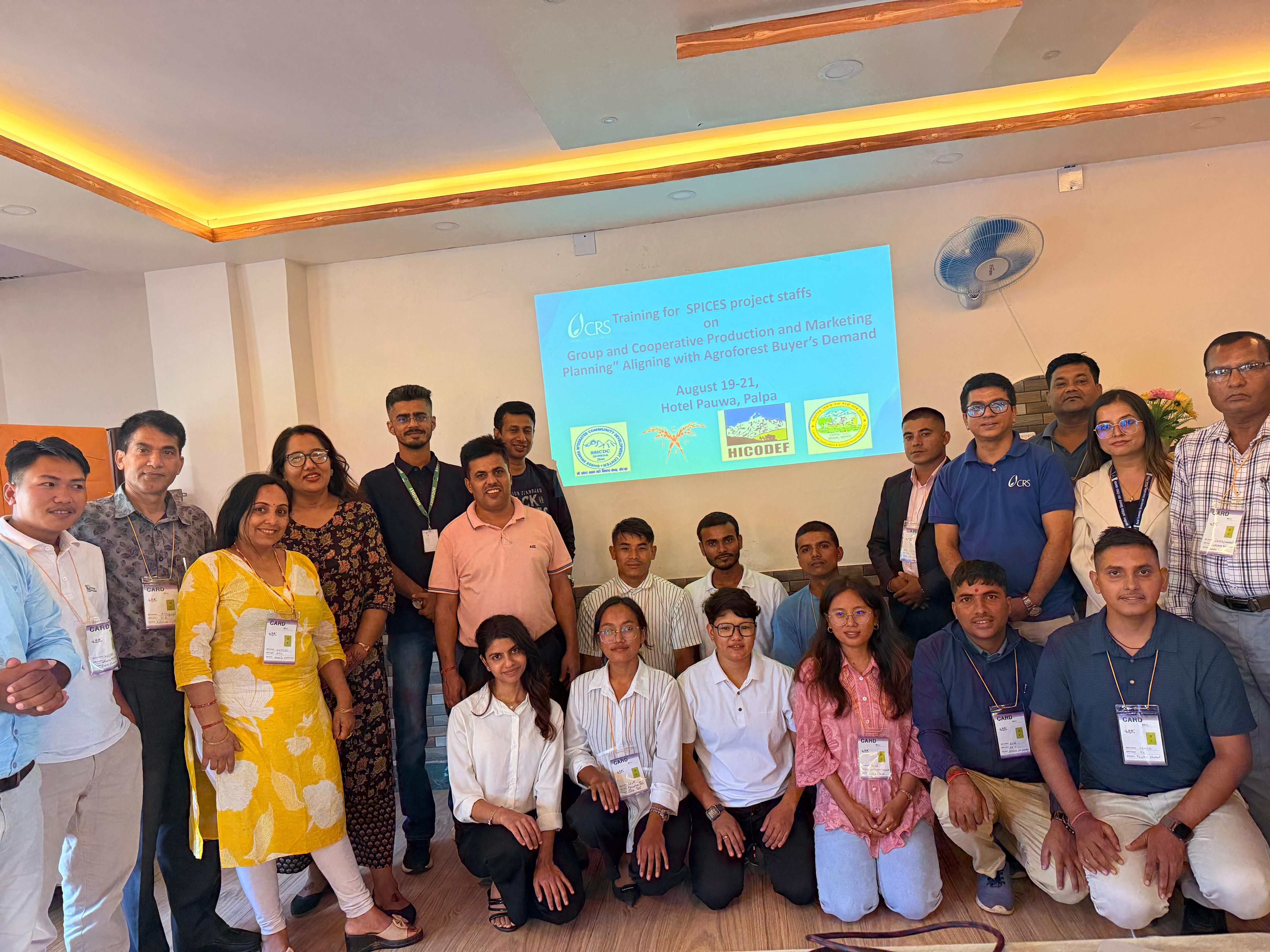Three-Day Training on Group and Cooperative Production and Marketing
A three-day training on Group and Cooperative Production and Marketing Planning, aligned with agroforestry product buyers’ demand, was successfully conducted in Palpa with 19 participants from CRS, CRS partner organizations under the SPICES project including REDA, HICODEF, SSIDC and CDAFN as well as trainers from R & D Innovative Solution Pvt. Ltd. The program aimed to enhance participants’ capacity in market-oriented production, value chain development, and cooperative linkages.
The training began with welcome remarks from Mr. Prachanda Kattel and Mr. Lila Bahadur Karki, followed by sessions on safeguarding and knowledge-sharing. Mr. Jib Sharma led discussions on market-oriented production, value chain strengthening, and innovation in agroforestry, highlighting the importance of moving from household-level production to cooperative-level aggregation linked to traders and private sector actors.
Interactive sessions by Mrs. Sunita Nhemaphuki included an ice-breaking activity in which each participant introduced themselves using an agroforestry crop name that began with the first letter of their own name, along with reflection exercises and practical demonstrations to help participants apply new concepts. Before beginning the sessions Facilitator introduced the Johari Window Concept which is a self-awareness and communication tool that helps individuals understand what is known and unknown to themselves and others, enhancing feedback, learning, and collaboration.
A key learning on the first day focused on value chain and role mapping. Participants were asked to identify the actors in a value chain and describe their roles, beginning with the agricultural product they considered most important. They then analyzed the value chain of the selected product and reflected on how they could contribute to strengthening the value chain in their own working areas. This exercise enhanced participants’ understanding, engagement, and interaction throughout the training. Then after facilitator Sunita Nhemaphuki highlighted the market demanded crop standard of Ginger, Turmeric, Large Cardamom and Mungbean.
A key learning highlighted during the second day was the “Leaking Pot” model, which illustrates household-level budgeting, planning and financial discipline. In the exercise, a pot represented total income while “leaks” symbolized expenditures. Participants were divided in groups as per their organization where they made a leaking pot taking one person from their working area which helped to reflect the average condition of the community. Participants learned that controlling these leaks is essential for savings, investment in productive activities, and effective planning.
In another session participants again divided into groups and they made a production plan for three years at a household level and a 3 years marketing plan for the cooperative.

The training also focused on market system development, covering demand-driven production, pre- and post-harvest management, commodity aggregation, and connecting local production with buyers. Practical tools, including the market cycle diagram (Production → Collection & Storage → Quality → Market Linkage) and financial discipline comparisons, helped participants better understand and visualize sustainable practices.
On the final day, participants presented their cooperative and aggregator plans, integrating SMART planning principles and linking production with market demand. Standard Operational Plan (SOP) was discussed, where the production to market every step was discussed in detail and what buyers wanted was the major focus. After that participants again did a group work where they listed key roles of the private sector. The training concluded with a discussion on the responsibilities of NGOs in developing and strengthening demand and supply channels.
By the end of the training, participants reported improved understanding of market systems, value chains, household budgeting, and cooperative planning, committing to implement these learnings in their respective communities to promote sustainable, demand-driven agroforestry production.




प्रतिक्रिया